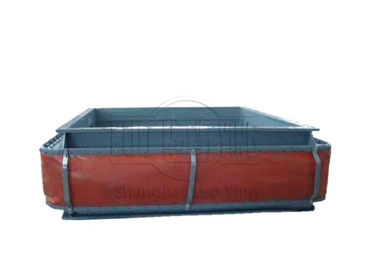The main advantages of fabric compensator
Dec-22-03
Fabric compensators (non-metallic expansion joints): single or multi-layer fabrics and elastomers. Tailored to specific shapes, sizes and operating conditions. Gas fluids are mainly used in fabric compensators. It provides piping systems with the flexibility to cope with: pipe expansion and contraction due to temperature variations, vibration, noise, component movement, installation and removal of large components, installation tolerances, and misalignment.
Fabric compensators (non-metallic expansion joints): compensate large movements over short distances while absorbing movement in multiple planes, very low forces required to move expansion joints, resistance to noise and vibration, corrosion resistant materials, easy installation and maintenance, very low replacement costs, design freedom, thermal breakage, construction, design criteria, environmental conditions (temperature, environment, location), operating conditions (temperature, pressure, movement, noise insulation), medium composition (temperature, chemical composition, wear, moisture), clamping type (flue gas density).

Main advantages of fabric compensators: compensation of large movements (axial, lateral, angular, torsional), no size limitation, low cost of raw materials, low cost of installation and maintenance, lightness and convenience (reduction of pipeline load, safety for employees), corrosion resistance, single/multi-layer expansion joints, single layer, only one reinforced elastic layer, multi-layer, different layers of different materials: support layer: giving a specific shape for a special configuration, protecting joints, keep insulation in place, insulation layer: thermal barrier, chemical barrier: gas seal, housing: provides external environmental protection, complementary gas seal, belt type/flange type, flexible element of belt expansion joint made of flat belt. It is most efficient in manufacturing and installation. The material is subjected to minimum stress until it moves under operation. Many different types of frames are allowed to adapt to the operating conditions. Makes it easier to replace flexible elements. Longer service life of the flexible elements of expansion joints made of right-angle integrated flanges. The simplest connection method. Mainly recommended for low temperature applications.


